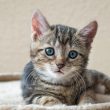Are you considering breeding hedgehogs but unsure of where to start? This comprehensive guide will walk you through the entire process of hedgehog breeding tips. We’ve got you covered, from preparing for breeding to handling the birth process and caring for the litter. Let’s dive into hedgehog breeding and ensure a successful journey ahead.
How to Prepare for Hedgehog Breeding
Before you embark on the exciting journey of breeding hedgehogs, you must make adequate preparations. Setting up the nesting area is crucial to ensure a comfortable environment for the pregnant hedgehog. Additionally, choosing a compatible mate plays a significant role in successful breeding. Understanding the gestation period of approximately 35 days will help you plan for the arrival of the hoglets.
Identifying Signs of Pregnancy in Hedgehogs
Once the breeding has taken place, it’s important to be able to identify the signs of pregnancy in female hedgehogs. Changes in behavior, such as nesting instincts, and physical changes in the hedgehog’s body are key indicators. Consulting with an experienced breeder can provide valuable insights and guidance throughout this process.
Handling the Birth Process and Caring for the Litter
As the due date approaches, creating a comfortable nest for the mother hedgehog is essential. Ensuring she is well-fed and hydrated will contribute to a smooth birthing process. It’s crucial to monitor the hoglets’ health closely, providing the necessary care and attention during their early stages of life.
Dealing with Challenges in Hedgehog Breeding
While hedgehog breeding can be rewarding, it also comes with its challenges. Addressing issues such as cannibalism in litters and understanding reproductive issues are important aspects to consider. In case of complications, seeking advice from professionals, such as an experienced hedgehog breeder, is recommended.
Tips for Effective Hedgehog Breeding
For successful hedgehog breeding, provide adequate food and water to ensure the health and well-being of the hedgehogs. Promoting courtship and mating behavior between the male and female hedgehogs is crucial for a successful breeding process. Managing breeding cycles and determining the ideal number of litters per year can help maintain the hedgehog population effectively.
Q: How do I breed hedgehogs?
A: To breed hedgehogs, you need to introduce a male and female hedgehog together in a suitable environment and monitor their interactions until mating occurs.
Q: What should I know about the gestation period of hedgehogs?
A: The gestation period for hedgehogs is approximately 35 days, during which the female will carry the hoglets before giving birth.
Q: How can I tell if a hedgehog is pregnant?
A: You can tell if a hedgehog is pregnant by observing changes in her behavior, weight gain, and nesting behaviors as she prepares to give birth.
Q: How many hoglets can I expect in a hedgehog litter?
A: Hedgehog litter sizes can vary, but typically range from 3 to 7 hoglets per litter.
Q: When do hedgehogs reach sexual maturity?
A: Hedgehogs reach sexual maturity around 6-8 months of age, at which point they are able to reproduce.
Q: How should I prepare for the arrival of baby hedgehogs?
A: To prepare for baby hedgehogs, ensure the mother hedgehog has a proper nesting area, enough food, and a calm environment to care for her offspring.
Q: Can I put the male and female hedgehogs together all the time?
A: Keeping the male and female hedgehogs together all the time is not recommended, as this can lead to stress or potential mating issues if not managed properly.
Q: What is the average age of a hedgehog breeding?
If you’re considering breeding a female hedgehog, it’s important to understand the process. Male hedgehogs and females are ready to breed when they are around 6-7 months old. The female should be placed in the male’s cage for the first time, while keeping a close eye on their temperament. Don’t be discouraged if they play hard to get at first – this is normal behavior. After mating, the female will reabsorb the male’s sperm and undergo a 4 week gestation period. Keep her bedding clean and leave her alone as much as possible. About 10 days after birth, the hoglets will be born. Make sure to have plenty of food and water for the mother.
It is recommended to only try breeding a female once she is 6 months old. If she does have her first litter, be prepared for the possibility of 3 litters per year. If the mother eats the babies, do not panic – it is a natural instinct. You can try to pick up one baby at a time to hand-rear them. Prepare squares of toilet paper to line their cage with, and feed them every 2-4 hours. As the babies grow, you can gradually increase the amount of food they eat each feeding.








